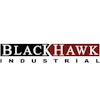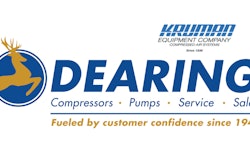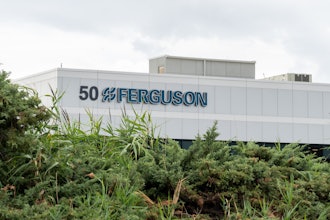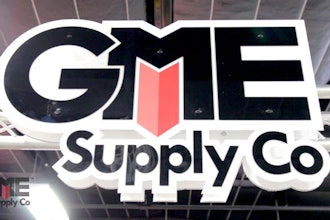CASE STUDY
BUILDING THE FOUNDATION FOR CONTINUOUS
PAPERBOARD AND PACKAGING IMPROVEMENTS
(855) 462-5630
PerformanceSolutionsbyMilliken.com
920 Milliken Rd
Spartanburg, SC 29303
This maker of paperboard, corrugated
products, and pulp had already adopted
some lean concepts in some facilities,
but leaders wanted to standardize the
company’s approach to improvement
across the entire plant portfolio.
Bobby Reddick, a senior practitioner with
Performance Solutions who has worked
with clients for a decade, initiated the
engagement by hosting the company’s
senior executives for a tour of Milliken &
Company plants. Reddick leverages 20
years of experience at Milliken & Company
plants — supervisor, plant production
manager, process engineer, maintenance
manager — to explain how the Milliken
Performance System (MPS) can help
clients: “During my time at Milliken, I
learned the how to lead improvement
in plants, breaking them down into
implementation of the MPS pillars within
our locations and teaching all floor
associates, managers, and executives
how to run the system.”
After executives saw and were convinced
of the power of MPS and how it could be
applied in their own facilities, Reddick
led a master planning process with the
company’s senior leadership, including:
1. Identifying the company’s current
competitive positioning with a SWOT
analysis (strengths/weaknesses/
opportunities/threats)
2. Crafting a vision of what the company
will look like, and how it will perform, in
five to 10 years
3. Distilling the assessment and vision into
a concise “Y page” document, explaining
“why” the company needs to improve
4. Translating the vision into easy-to-
understand objectives for quality, cost,
delivery, innovation, safety, morale, and
environment (QCDISME)
5. Defining key performance indicators
(KPIs) by which the company will
measure progress
6. Identifying plants for the first phase of
the MPS rollout.
“We started to build a relationship with
senior leadership,” says Reddick, “and
laid the foundation for how we would go
into plants and establish model areas,
along with the timing and logistics of
the improvement process. We told them
exactly what to expect when Performance
Solutions arrived on site.”
General managers from selected locations
also participated in master planning at
the corporate level, adds Reddick. “So
they became familiar with MPS, and
were confident that they had corporate
support.” At the plants, Performance
Solutions practitioners conducted a zero-
loss analysis, identifying potential plant-
level savings by eliminating all problems
(downtime, quality rejects, injuries, time
and resource wastes) and applying a
dollar figure to each. The results of this
analysis offered directional guidance
at first, and then — as improvement
progressed — became realistic targets.
PERFORMANCE-IMPROVEMENT
OPPORTUNITY
Mergers and acquisitions are common in the paperboard and
packaging (P&P) industry. These transactions enable companies
to grow and expand globally, but also create operational issues
as organizations combine different production processes,
corporate cultures. P&P companies with standardized
production systems have a substantial competitive advantage,
since they can rapidly integrate new operations while improving
quality, safety, and productivity.
CLIENT PLANT
A multibillion-dollar, global P&P manufacturer
planned to implement a production system across
dozens of plants with varied histories; some had
been part of the company for decades, while others
were recently acquired. Company leaders hoped
that the new system would create sustainable
performance improvements, and retained
Performance Solutions by Milliken — the operations-
excellence consultancy of Milliken & Company — to
drive the change.
BUILDING THE FOUNDATION FOR CONTINUOUS
PAPERBOARD AND PACKAGING IMPROVEMENTS
Initial improvements to model areas
resulted in modest gains of 5 percent
to 10 percent among most metrics. But
as the MPS implementation expanded
over years two and three, executives
reported dramatic improvements, even
as Performance Solutions involvement
decreased:
• Safety improved, in some cases
eliminating all incidents
• Rework was reduced by 50 percent
• Waste shrunk by 80 percent
• Equipment changeover times were
decreased by as much as 60 percent
GOING AFTER POWERFUL IMPROVEMENTS
The plants that first implemented MPS
at the company continue to improve. In
addition, the company has implemented
MPS throughout other plants and divisions
(using the company’s own practitioners),
creating a sustainable system of
operational excellence. “‘Improvement’
isn’t something this company’s employees
do in their spare time,” says Reddick.
“Improvement is the work they do all
the time. It’s not MPS anymore. It’s their
operating system — and their path to
improved safety, quality, and productivity.”
FUTURE SUCCESS
In each plant, improvement began
on a model line or machine that was
highly visible, critical to overall plant
performance, and in need of improvement
(i.e., high potential to exhibit the zero-loss
process). Improvements in the model
addressed the two MPS foundational
elements (strategic clarify and safety,
which Milliken deems necessary for any
type of improvement to occur) and the
nine MPS pillars (e.g., production control,
5S, continuous skills development, daily
team maintenance) until the model was
moved closer to zero-loss targets.
“We set targets and goals for the model,
and then implemented the pillars,” says
Reddick. “While working on the pillars,
they were also learning the methodology.
And after only 10 months, they started to
see improvements.” Once the model area
was transformed, MPS was replicated
elsewhere: first with 50 percent of each
plant’s A-ranked lines and equipment,
and then among all other A-ranked lines
and equipment. During replication, the
plants developed their own internal
practitioners and capabilities, and, in
doing so, developed and managed MPS
consistent with the own company’s
culture.
Phil McIntyre / Managing Director, Business Development & Marketing
Performance Solutions by Milliken / (864) 503-1359 / [email protected]
Bobby Reddick / Senior Practitioner / Performance Solutions by Milliken / (706) 302-6324 / [email protected]
KEY CONTACTS
PUT PERFORMANCE SOLUTIONS TO WORK FOR YOU
Performance Solutions by Milliken® works side by side with companies interested in strengthening and improving their
operations. The strategic approach that made Milliken one of the safest, most efficient manufacturers in the world is
the backbone of the consulting and educational services that Performance Solutions offers worldwide. Performance
Solutions by Milliken practitioners are serving over 350 operations, in 23 countries, and covering a wide variety of
industries.
Visit www.PerformanceSolutionsByMilliken.com to learn more about Performance Solutions’ consulting and
education services.
Building The Foundation For Continuous Paperboard and Packaging Improvements
A multibillion-dollar, global P&P manufacturer planned to implement a production system across dozens of plants with varied histories. Company leaders hoped that the new system would create sustainable performance improvements, and retained Performance Solutions by Milliken to drive the change.
Latest in Home
BlackHawk Adds McNutt as Northeast Region GM
September 16, 2025
Ferguson Reports Strong Results to Finish '25
September 16, 2025
Wesco Invests $10M in Procurement Software Startup
September 15, 2025






















